Question
"Hello, Thank you for taking the time to answer this question. I would like to know your thoughts regarding Panosteitis or "pano." I noticed my 5 month old German Shepherd (male) limping so after research and observation i decided to take him to the vet. I explained to the vet that i thought it was pano. After the exam and some leg manipulation he confirmed it was Panosteitis. It is my understanding growth disease is more common in large, male dogs. It can show up as young as 4 to 12 months and usually does not occur after a dog is 18 to 20 months. Now i have read some studies that have linked genetic and food protein to the cause, but there is not enough conclusive evidence to support that theory. I feed my dog a 75% dry dog food( Taste of the wild) and 25% cooked /natural food diet. The dog's diet is made up of about 20% to 25% protein; is this to much protein? The vet told me to give the dog 1/2 of a 325mg bufferd aspirin for pain or 2 81 mg baby aspirins. Should I give him vitamin C or ester C too? What about a calcium supplement? Thanks for you help have a great day
AnswerCalcium is the LAST thing you want to give this dog. It is the imbalance of the calcium/phosphorus ratio that can start problems like this in large breeds.
This is why Hill's pet foods spent YEARS researching this disease and other joint/growth problems in large dogs and came up with a food that helps prevent this problem. It is called Science Diet Large Breed puppy Growth. I have not known a dog yet that was raised on this diet that ever came down with panosteitis.
Ester C won't do anything to help this problem. It is an imflammitory disease so the baby aspirin will help somewhat, but they are very hard on a dog's stomach lining. So make sure that he has them after a full meal.
Here is some information on panosteitis:
What is panosteitis?
Panosteitis is a bone disease of dogs that is characterized by bone proliferation and remodeling. It is often painful and can last as long as 18 months, though more commonly it lasts from 2 to 5 months. It is characterized by lameness that often comes and goes and changes from leg to leg. It is a common problem in several large breeds and the cause is currently unknown. The treatment is symptomatic but the outcome is usually very good.
Who gets panosteitis?
Panosteitis is most common in large breed dogs between 6 and 18 months of age.
Panosteitis is most common in large breed dogs between 6 and 18 months of age. Occasionally, middle-aged German Shepherds will have a bout of panosteitis. It affects dogs worldwide and has been recognized and studied since the 1950's. Male dogs are much more likely to get panosteitis then females. There is a higher incidence in several breeds including German Shepherds, Great Danes, Doberman Pinschers, Golden Retrievers, Labrador Retrievers, Rottweilers, and Basset Hounds.
What causes panosteitis?
The cause of panosteitis is currently unknown. There have been many theories as to the cause of this disease. Originally, it was suspected that the disease was caused by a bacterial infection. However, several investigational studies failed to isolate any bacteria. In addition, the disease responds poorly to antibiotics, further suggesting a cause other than bacterial.
Other studies showed that if bone marrow from affected dogs was injected into the bones of healthy dogs, the healthy dogs would contract the disease. It has therefore been speculated that a virus may cause the disease. The high fever, tonsillitis, and altered white blood cell count would also go along with the viral theory. Another interesting twist to the viral theory is that panosteitis was first identified as a problem at the same time that modified live distemper vaccines became widely available on the market. Since wild distemper virus can be isolated from bone tissue, some researchers feel that there might be a link between distemper virus vaccine and panosteitis, however, more research in this area will need to be done before any serious speculations can be made.
Another theory is that panosteitis might have a genetic link. Because of the greatly increased incidence in certain breeds and families of dogs, it is very likely that there is a genetic component involved in this disease.
Lately, there have been some claims that nutrition, particularly protein and fat concentrations in the diet, may have an impact on the incidence of the disease. But here again, more research needs to be done to substantiate these claims. Most likely this is a multifactorial disease that has several different causes including viral, genetic, and possibly nutritional.
What are the symptoms?
Presenting symptoms include a history of acute sudden lameness not associated with any trauma. It is usually a large breed male dog between the ages of 6 to 18 months. There are periods of lameness lasting from 2 to 3 weeks and it may shift from leg to leg. The most commonly affected bones are the radius, ulna, humerus, femur, and tibia, though the foot and pelvic bones may also be involved. The dog may show a reluctance to walk or exercise. When the affected bones are squeezed, the dog reacts painfully. Occasionally, affected dogs will have a fever, tonsillitis, or an elevated white blood cell count.
How is panosteitis diagnosed?
Panosteitis is often diagnosed based on a combination of presenting signs and radiographs (x-rays). The presenting symptoms are listed above. If a dog is suspected of having panosteitis, then radiographs are indicated to confirm the diagnosis. Individual radiographs of each affected limb should be taken. Often, radiographs of the unaffected limbs are also taken to compare the bone changes. In early forms of the disease, a subtle increase in bone density is observed in the center part of the affected bones. During the middle part of the disease, the bone becomes more patchy or mottled in appearance and the outer surface of the bone may appear roughened. In the late phase, the bone is still slightly mottled, but is beginning to return to a more normal appearance.
How is panosteitis treated?
There is no specific treatment for the disease. Since this condition is often very painful, painkillers such as buffered aspirin or carprofen (Rimadyl) are recommended. (Do NOT give your cat aspirin unless prescribed by your veterinarian.) These products are used as needed to help control the pain. Antibiotics are not routinely used unless there are indications of concurrent infections. In severe cases, steroids are used, but because of the potential long-term side effects of these drugs, painkillers are often tried first. This disease is self-limiting and after it runs its course, there are very few long-term side effects or need for further treatment. As mentioned earlier, the disease usually lasts for two to five months, but can last much longer. There are several conditions with similar symptoms, so if a dog continues to have symptoms after the normal period of time or is not responding to treatment, she should be reevaluated.
====================================
So treat as your vet says to treat and just hope he recovers quickly from this. You might want to back off the homemade diet for a while in case that is aggravating this condition.
20- 25% protein is not too high, in fact for a growing puppy it is not enough. Most commercial foods are in the 35% range for puppies that are growing. Taste of the Wild puppy food has between 20 and 30%. These foods sound good but are not trial fed, have no research behind them and are NOT right for all life stages. Feeding a senior dog the formula that claims to be for all life stages means that a dog would get much more protein than an older dog's kidneys can handle.
So any food that claims to be "for all life stages" are usually formulated for puppies to meet the AAFCO standards. Read the bag. Does it say these foods were trial fed to meet the standards? If it says they were 'formulated' to meet them then the manufacturer has no clue of the long term viability of this food on dogs.
I know it reads like a good gourmet food but eating caviar all the time isn't good for you either.
So rethink his diet, it might help. I stick with Science Diet because I know for a fact that their food has over 50 years of veterinary research behind it, ongoing research and years and years of trials with real dogs and cats to show how well the foods they make support the wellness and longevity of our pets.
I hope he feels better soon.

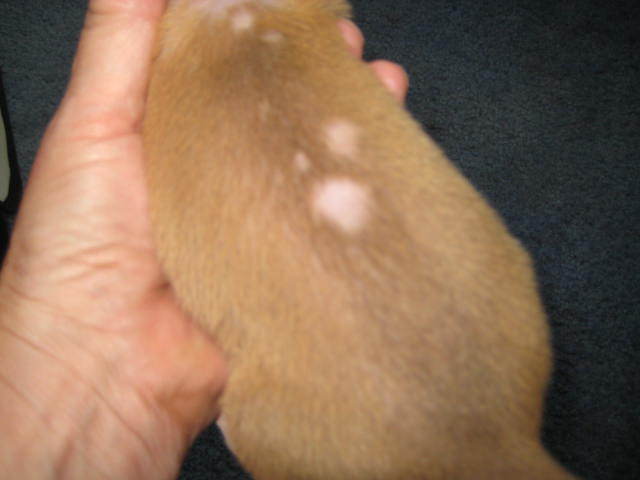 1.6 pound 10 week chihuahua puppy
Questionbald spots forming
QUESTION: Two weeks a
1.6 pound 10 week chihuahua puppy
Questionbald spots forming
QUESTION: Two weeks a
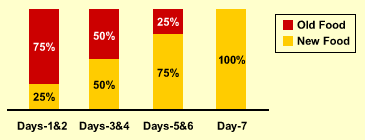 kitten with bloody stool
QuestionQUESTION: i have a kitten here, about 2-3 month
kitten with bloody stool
QuestionQUESTION: i have a kitten here, about 2-3 month
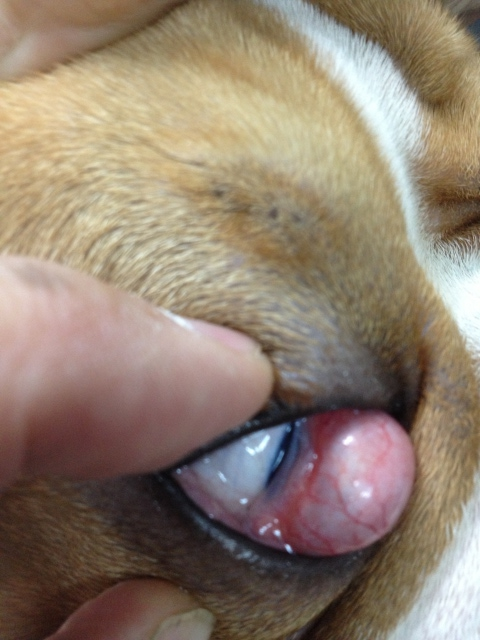 cherry eye
Question
Dog eye Dog eye
My 5 months old F
cherry eye
Question
Dog eye Dog eye
My 5 months old F
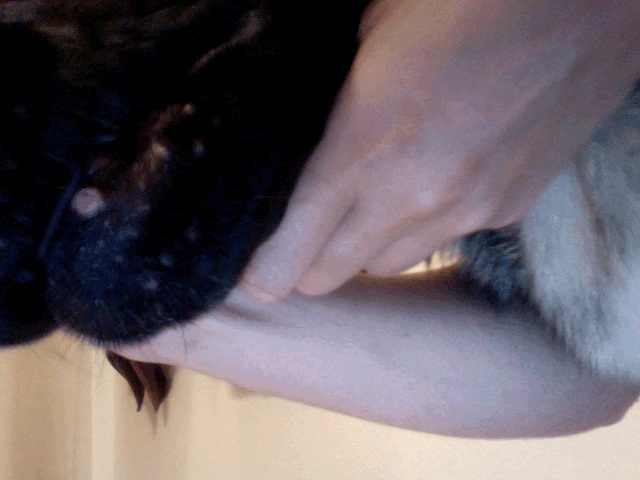 German Shepard has red sore on lip
Question
sore on charlies lip
The other day I no
German Shepard has red sore on lip
Question
sore on charlies lip
The other day I no
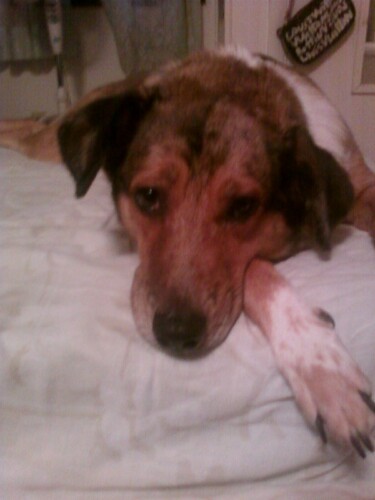 My dogs chronic ear allergy infections
Question
Hiedi
My dog whom is three years now-part Aust
My dogs chronic ear allergy infections
Question
Hiedi
My dog whom is three years now-part Aust